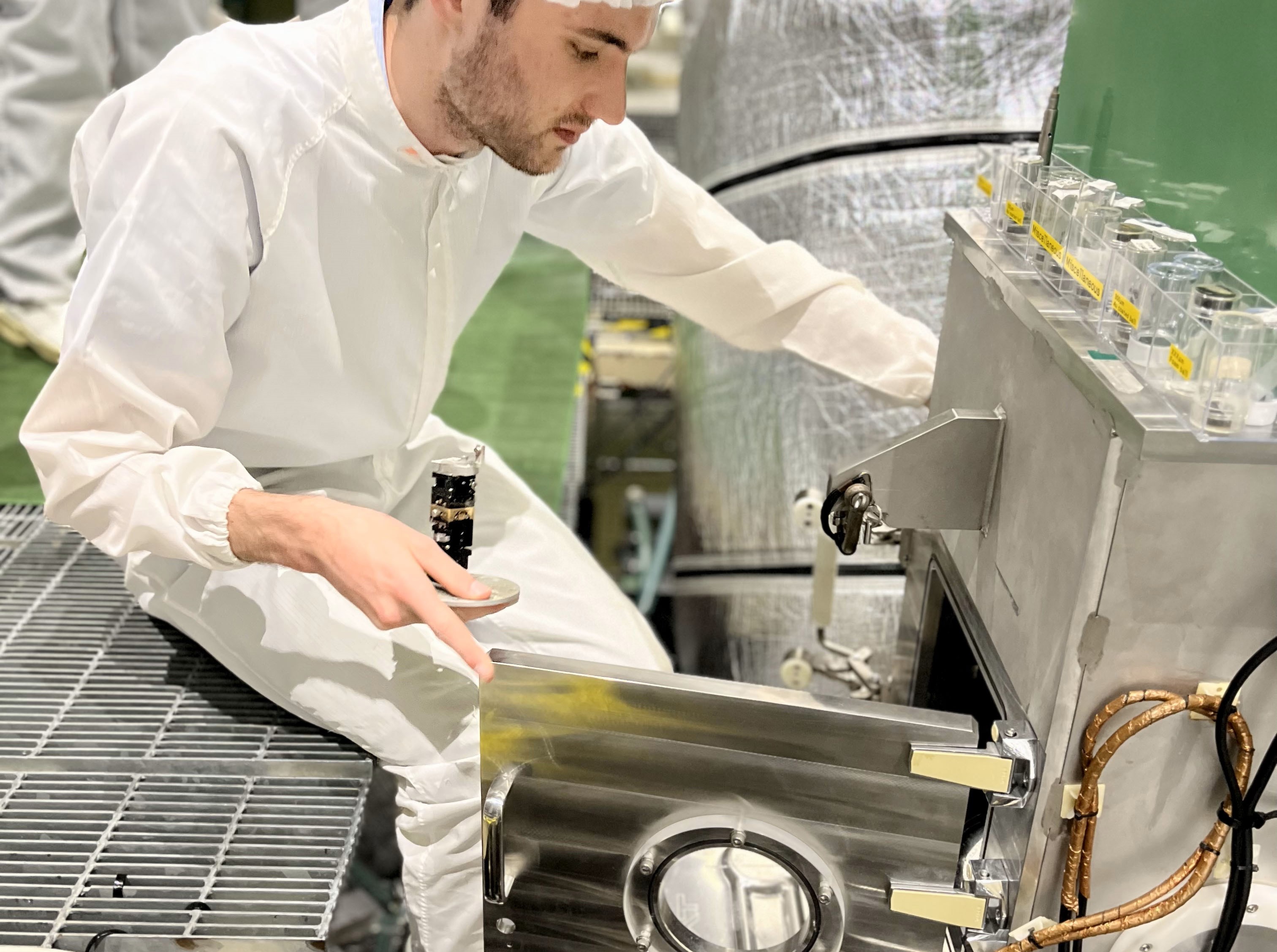In an article today at Forbes, contributor Stephen Wunker interviewed HB11 Energy COO Greg Ainsworth about commercialising the component technologies inherent in Fusion energy. Greg explained how HB11 is focusing on “… two of the technologies needed for fusion that can generate revenue today.” Greg argues that commercial pressures facing fusion companies, can in fact accelerate the readiness of the technology for clean fusion energy itself, bringing it to the grid, faster.
Here’s a copy of the Forbes story by Stephen Wunker, 14 November 2024…
A New Commercial Model To Unlock Fusion Energy
Fusion energy, long the holy grail of clean energy enthusiasts, has endured decades of research, often with considerable financial strain. While privately funded tech tycoons and governments alike are championing the cause, the technology remains a business challenge, requiring deep pockets and enduring patience from investors. Fusion energy requires a new commercial model.
This situation limits funding opportunities, which in turn demands novel approaches. Companies like Australia’s HB11 are exploring these, commercializing component technologies and, in the process, creating a revenue bridge to fund full-scale fusion. “We’re not boiling the ocean,” says Greg Ainsworth, HB11’s COO, pointing to the economic logic driving this pivot, “we’ve focused on two of the technologies needed for fusion that can generate revenue today.”
Fusion’s Long Road and Its Financial Catch-22
Fusion promises endless, clean energy by emulating the nuclear reactions powering stars. The catch is that fusion, unlike its fission cousin, is extremely difficult to control on Earth. Researchers have to create the conditions for atoms to fuse, a feat that demands immense power, advanced technology, and specialized fuels. It’s a struggle to solve the physics puzzle of “net energy gain,” where the energy produced surpasses the energy needed to spark the reaction.
Such a technology demands relentless investment with deferred rewards, and while Washington and other governments support fusion in principle, funding levels have been meager compared to the massive stakes. With few private investors willing to wait decades for a return, government funding alone remains inadequate. As Ainsworth put it, “The fusion industry’s current solution is to ask government or investors to fund building specialized chickens and eggs at the same time,” alluding to the sequential technological steps necessary for fusion but acknowledging the impracticality of building each piece in unison.
A New Commercial Model: Components First
HB11, which focuses on laser-boron fusion, takes an approach that might just circumvent this conundrum. By commercializing specific components in fusion’s vast technological puzzle, HB11 has found a way to transform individual pieces of its fusion technology into profitable ventures. These commercialized technologies can sustain HB11’s overall mission while proving their worth to investors in the interim. “It’s still about building a fusion energy power plant, but by focusing on the components that have commercial legs first, we generate a financial return for our investors, and thanks to commercial pressures we accelerate the readiness of technology for fusion energy itself”
Two technologies stand at the center of HB11’s commercial roadmap: high-powered lasers and boron fuel targets. These elements, critical for their approach to fusion, are independently valuable in defense, scientific research, and medical industries. A laser system tailored for HB11’s fusion technology, for instance, has applications in directed energy defense systems. Boron targets, another vital component, are also being engineered for niche uses, such as medical isotope production.
Laser Technology in Defense and Beyond
HB11’s high-power pulsed laser system, initially designed to drive fusion reactions, is gaining traction as a potential solution for military and defense applications. Modern warfare increasingly relies on lasers for precision targeting and disabling unmanned aerial vehicles (UAVs) and HB11’s unique lasers offer distinct tactical advantages, including longer range. Current continuous-wave laser systems struggle with energy efficiency, often burning much more power than they deliver to the target. HB11’s pulsed lasers, on the other hand, achieve powerful bursts that disable targets through intensity rather than brute force, deliver on the promise of “unlimited magazine,” and can engage targets at greater distance.
The laser market is substantial, estimated at over $10 billion with a robust growth trajectory. HB11 projects that, through licensing agreements and partnerships, it can capture a modest but significant share of this market.
Beyond defense, the laser technology finds potential applications in subsurface resource exploration and in scientific research facilities, where high-energy, short-pulse lasers enable novel experimentation in fields ranging from particle physics to materials science. HB11 has even engaged in discussions about a national laser facility that could help cement Australia’s position in the high-energy research sector.
Boron Targets: Small but Mighty
HB11’s boron fuel targets offer another path to early revenue while laying the groundwork for future fusion reactors. These small, carefully crafted pellets serve as fusion fuel, though they also present value as consumable components in compact radiation sources used for medical isotope production. Medical isotopes, critical for diagnostic imaging and cancer treatment, are typically produced in large nuclear reactors. However, compact systems using HB11’s boron targets offer a promising alternative, particularly in regions where reactor access is limited or undesirable.
Revenue from boron target sales could start at a modest level, but the real value lies in the proprietary knowledge and the intellectual property that HB11 gains through production. This “experience curve,” as Ainsworth puts it, allows HB11 to continually improve its manufacturing processes, reinforcing its position as a leader in boron-based fuels. The commercialization of boron targets for medical purposes is expected to grow into a sizable revenue stream, potentially worth billions by 2050 as global demand for medical isotopes increases.
Bridging the Fusion Funding Gap
What HB11 and a few other enterprising fusion startups are doing is more than just selling their research outputs. They’re building a dual-use business model that supports the longer-term fusion vision without relying solely on investor patience or government grants. Commonwealth Fusion in the United States and Tokamak Energy in the UK are following similar paths, albeit with different technological focuses. Commonwealth’s high-temperature superconducting magnets, for example, have found buyers in research institutions, marking a steady step forward in magnet technology while adding financial stability to Commonwealth’s operations.
For HB11, the approach is part of a broader philosophy. As Ainsworth aptly put it, “We’re still retiring risk from fusion energy technology, but in terms of prioritization, we’re focusing on the bits that have commercial legs.” This approach not only raises immediate capital but also improves the value proposition of HB11’s fusion system as the technology matures, creating a future scenario where only a handful of technological hurdles remain to realize commercial fusion energy.
The Path to Fusion’s Future
Despite recent strides, fusion energy remains years, if not decades, from commercial readiness. The fusion industry, however, is not stalling in a “wait-and-see” position. Instead, companies are now developing innovative pathways that transform fusion’s biggest challenge—its daunting costs and lengthy development timeline—into new opportunities. In the process, they are not only advancing fusion but potentially reshaping industries like defense, medical technology, and high-energy research.
With each laser sale and each boron target shipped, fusion inches closer from the realm of scientific aspiration to commercial reality. And if Ainsworth’s outlook holds true, HB11 might just succeed by “not boiling the ocean.” Instead, they’ll light it up one pulse at a time.

